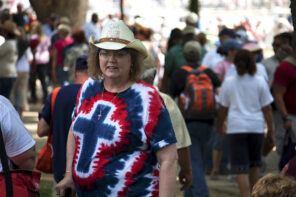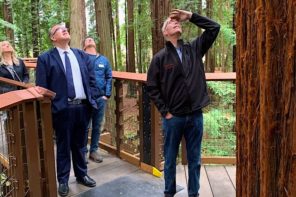On Thursday RD senior correspondent Elizabeth Drescher responded to Katherine Stewart’s Nov. 26 essay, The Demographic that Should Keep Rove Awake at Night. The following is Stewart’s response to Drescher. —ed.
Elizabeth Drescher is right to point out that only a fraction of those people who identify themselves in surveys as “religiously unaffiliated” (a.k.a. the “nones”) also identify themselves as nonbelievers. In her eagerness to make this point, however, she asserts that I “push to characterize the unaffiliated as ‘unbelievers’ and ‘atheists.’” I did no such thing. She also seems to be using this straw man to draw attention away from the very substantial and largely under-reported change in America’s political culture.
Now, to the numbers. As I pointed out in my article, the Pew survey suggests that about one-third of the nones can be characterized as nonbelievers. Other surveys get different results, and the degree of uncertainty in the data is quite high. Still, we can draw three conclusions from the data—conclusions that I want to stress here because I think that Drescher’s point, valid as it is, distracts from them.
First, self-identified nonbelievers alone are a big group. If we put them at roughly six percent, as Pew suggests, then they are a significant force in American culture—bigger than Asian Americans, and three times as big as either Jews or Mormons.
Second, both nonbelievers and nones are growing dramatically, and this growth is likely to continue. Young people are far more likely to be unaffiliated and/or nonbelievers, and the data suggests that they don’t change their minds much as they get older.
Third—and here is where Drescher’s commentary misses the point of my piece—the limited evidence we have indicates that the nones taken as a whole (nonbelievers plus the “spiritual” ones) do have enough coherence as a political group to be regarded as such by both analysts and politicians. Why do I say this? Because the surveys show that the nones vote in decisive numbers for one side. (78 percent of all nones voted for Obama in 2012 according to the Public Religion Research Institute, while Pew had it at 70 percent.) These numbers are comparable to other groups that no one disputes are worthy of political analysis: Latinos and white evangelicals.
Drescher asserts that because the nones are defined by their lack of association—they have no “central meeting house”—they cannot be taken seriously as a group. This assumes that in order for a group to be politically relevant, they must all get together on Sundays or believe in the same set of theological doctrines. But that is a standard that is not applied to any other politically relevant demographic. Do white evangelicals all believe the same thing? Not in the least. In fact, many don’t go to church; some support pro-choice policies; and a significant number don’t vote the way they are “supposed to.”
Drescher is understandably concerned to create a space for that group of people that we identify as “spiritual but not religious,” and she rightly notes that the growth of the nones represents an important part of the growth of this category (though we shouldn’t overlook the growth in the “spiritual but not religious, but claim to be affiliated” group). But the political question about the nones is not what they believe but how they will act politically. Whether or not America’s nones end up looking exactly like a secular population along European lines we can still ask whether and how their politics are influenced by their religious self-identification.
I don’t think there is a simple answer to such questions, but the data so far leads me to think that the nones taken as a whole (the spiritual and the “unspiritual” alike) do represent a secularizing force in the public sphere, and that in the last election we saw the effects of their rise (or better, return) in America.




